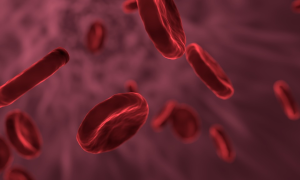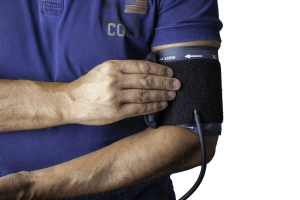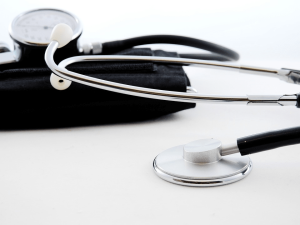
High blood pressure is often considered a silent or invisible condition because its symptoms are very mild. But don’t let this fool you.
Even though it may feel like you don’t have a problem due to this ‘lack’ of symptoms, this doesn’t mean it can’t cause serious damage to your health.
On the contrary, the damage can be quite extensive, especially if you don’t recognize that you have high blood pressure in a timely fashion.
Learning the most common symptoms of high blood pressure can help you identify them more easily when they do make themselves known, which means you can start treatment as early as possible.
What Is High Blood Pressure?
High blood pressure is also called hypertension. It’s a condition that typically results in damaged or blocked arteries, which reduces how efficiently blood is able to circulate through your body. With elevated blood pressure, more wear and tear is placed on your arteries and heart.
High blood pressure can be dangerous because it restricts blood and oxygen supply to different parts of your body. This taxes your body and may lead to organ failure if it’s not appropriately managed, though most cases of hypertension don’t progress this far.
Understanding Blood Pressure
Your blood pressure is a measure of the force with which your blood cells press against the walls of your veins and arteries. It’s measured as one number over another.
You’ve probably heard your doctor say your blood pressure this way, but you might not have known exactly what it meant.
The first number represents your systolic blood pressure, which is the pressure on your artery walls at the time the heart is contracting and squeezing blood out through the arteries. The second is your diastolic blood pressure, which measures the pressure when the heart relaxes between beats.
Either number being too high can indicate a problem, but it’s best to find out what the average blood pressure is over a period of time before considering further treatment.
Healthy Blood Pressure Measurements

If your blood pressure doesn’t fall into the healthy range, it needs to be investigated further. A normal systolic blood pressure reading is 120 mm Hg, while diastolic blood pressure is normally about 80 mm Hg.
Blood pressure is generally considered elevated if it’s above 140 systolic and 90 diastolic. If your blood pressure reading spikes up to levels of 180 systolic or 120 diastolic, you should seek medical attention right away.
Oftentimes, the best way to know if you have high blood pressure is to test it. You can purchase a monitor that you can use to measure your blood pressure at home or schedule an annual physical with your regular doctor.
Symptoms of High Blood Pressure
Symptoms aren’t always present when your blood pressure is elevated, but it’s important to pay attention to them when they are. Keep a lookout for any of the following abnormalities:

- Fatigue
- Confusion
- More frequent or severe headaches
- Dizziness
- Nausea
- Rapid heartbeat
- Nosebleeds
- Chest pain
- Vision problems
- Blood in your urine
You’ll notice that many of these symptoms are nonspecific and could apply to a number of different conditions. This is why it’s so important to have your blood pressure tested so you can know for sure why these issues may be occurring
High Blood Pressure Treatment for Invisible Symptoms
Many people don’t realize that they have high blood pressure because their symptoms can be overlooked. They often don’t interfere with normal activity, but the problem is that the high blood pressure is still doing damage to your body.
Even though the symptoms can be somewhat invisible, high blood pressure can have very serious effects. By the time you begin to notice these effects, often, much damage has already been caused by the ongoing high blood pressure. Thus, it’s important to do all you can to normalize your blood pressure at an early stage of the diagnosis.
Most routine physicals involve checking your blood pressure. If your doctor is concerned, don’t ignore it. Simple lifestyle changes like eating better and getting more exercise can go a long way toward reducing hypertension.
Final Thoughts
Regular check-ups will help to reduce your risk of damage to your body from uncontrolled high blood pressure. The sooner you make a change to more healthy habits, the sooner you’ll see improvements in your blood pressure.
Over time, you’ll start to feel better too. The only way to get proper treatment for your high blood pressure is by seeing your doctor or healthcare provider. Be sure to do your part in identifying whether or not the condition exists.
